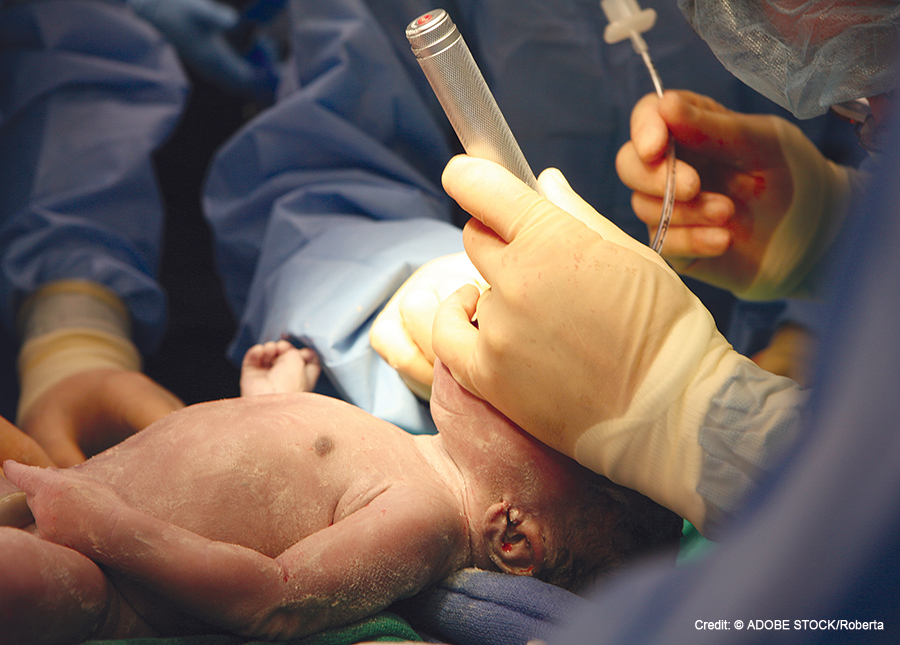 Using a video laryngoscope, versus direct laryngoscopy, when intubating infants can increase the odds of a successful intubation on the first attempt, according to a single-center, randomized trial published in The New England Journal of Medicine (2024. doi:10.1056/NEJMoa2402785) and presented at the Pediatric Academic Societies annual meeting. Video laryngoscopy may help reduce oral trauma and, in an emergency, lead to improved oxygen saturation for the patient.
Using a video laryngoscope, versus direct laryngoscopy, when intubating infants can increase the odds of a successful intubation on the first attempt, according to a single-center, randomized trial published in The New England Journal of Medicine (2024. doi:10.1056/NEJMoa2402785) and presented at the Pediatric Academic Societies annual meeting. Video laryngoscopy may help reduce oral trauma and, in an emergency, lead to improved oxygen saturation for the patient.
Explore This Issue
June 2024In the trial, 226 patients were randomized to video or direct laryngoscopy in a 1:1 ratio. Data were analyzed for 107 patients in each group. Intubation was successful on the first attempt for 79 patients in the video-laryngoscopy group (74%) and 48 patients in the direct-laryngoscopy group (45%). It took a median of one attempt for successful intubation in the video-laryngoscopy group and two attempts in the direct-laryngoscopy group. Oxygen saturations of less than 70% were seen in 45% of patients undergoing video laryngoscopy and 53% of patients undergoing direct laryngoscopy.
The authors note that their trial is limited by the small number of neonates studied at a single location using a single type of video laryngoscope. They also noted that, “our trial was not adequately powered to detect effects on adverse outcomes. Future studies should be large enough to determine whether video laryngoscopy has the potential to reduce harm.”